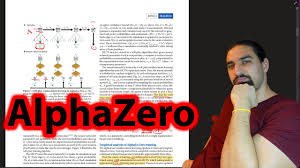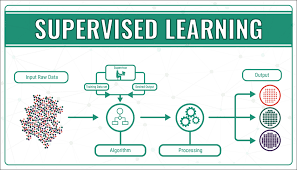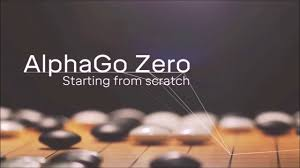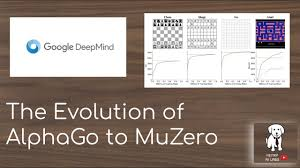Mastering the Game of Go with Deep Reinforcement Learning: The AlphaGo Breakthrough 2024
Introduction
The game of Go has long been considered one of the most challenging classic board games for artificial intelligence (AI). Unlike chess, Go has an immense search space and complex strategies that make traditional brute-force methods ineffective. DeepMind’s AlphaGo, introduced in 2016, revolutionized AI by combining deep neural networks and Monte Carlo Tree Search (MCTS), allowing it to defeat human world champions.
This blog explores how AlphaGo works, its architecture, and its impact on AI and reinforcement learning.
1. Why Was Go Considered a Challenge for AI?
Go presents unique challenges that make it harder than chess or checkers:
- Enormous Search Space: Go has 1017010^{170}10170 possible board positions, more than the number of atoms in the universe.
- Complex Decision-Making: Unlike chess, where piece values are clearly defined, Go requires long-term strategic planning.
- No Simple Heuristics: Chess AIs use hardcoded heuristics to evaluate board positions, but Go’s evaluation is abstract and difficult to quantify.
💡 Challenge: Traditional AI methods like brute-force search and minimax algorithms failed to master Go. Deep reinforcement learning (DRL) and MCTS provided a breakthrough solution.
2. AlphaGo’s Architecture: A Hybrid of Deep Learning and MCTS

AlphaGo’s success is attributed to three core AI components: 1️⃣ Policy Network (Decision-Making): Predicts the best move at any position.
2️⃣ Value Network (Evaluation): Estimates the probability of winning from a given board state.
3️⃣ Monte Carlo Tree Search (MCTS): Guides decision-making by simulating future moves.
🔹 Step 1: Supervised Learning for the Policy Network

AlphaGo’s first step was to train a neural network on millions of expert Go games. This Supervised Learning (SL) Policy Network learned to predict human moves with 57% accuracy, outperforming previous Go AI systems.
🛠 Neural Network Details:
- Input: 19×19 Go board state (one-hot encoded).
- Architecture: Deep Convolutional Neural Network (CNN).
- Output: Probability distribution over legal moves.
📌 Key Insight: AlphaGo first learned how humans play before improving through self-play reinforcement learning.
🔹 Step 2: Reinforcement Learning for Self-Improvement
Once AlphaGo learned from human games, it played millions of games against itself, improving through policy gradient reinforcement learning.
💡 Reinforcement Learning Process:
- Two AlphaGo instances play against each other.
- The winner’s policy updates to reinforce good moves.
- The network gradually moves beyond human strategies.
📌 Key Insight: AlphaGo surpassed human play by discovering strategies that no human had ever used before.
🔹 Step 3: The Value Network for Board Evaluation
After learning move selection, AlphaGo needed a way to evaluate board positions. Instead of simulating entire games, it used a Value Network trained to predict game outcomes.
🛠 How the Value Network Works:
- Trained on millions of self-play games.
- Learns to estimate the probability of winning from any board position.
- Replaces the need for full game rollouts in MCTS.
📌 Key Insight: The Value Network allowed AlphaGo to think ahead more efficiently, reducing the computational cost of deep tree searches.
🔹 Step 4: Monte Carlo Tree Search (MCTS)
MCTS is a decision-time planning algorithm that helps AlphaGo simulate possible future moves and refine its predictions.
🚀 How MCTS Works in AlphaGo: 1️⃣ Selection: The tree is traversed using a balance of exploitation (choosing high-value moves) and exploration (trying new moves).
2️⃣ Expansion: New nodes are added to the tree when an unexplored move is found.
3️⃣ Simulation: AlphaGo plays simulated games from the new position using the policy network.
4️⃣ Backpropagation: The results of each simulation update the tree to improve future decisions.
📌 Key Insight: MCTS helped AlphaGo simulate games efficiently, improving accuracy without brute-force computation.
3. AlphaGo’s Performance: Achieving Superhuman Play

After training, AlphaGo demonstrated unprecedented performance:
- 99.8% win rate against other Go programs.
- Defeated European Go champion Fan Hui 5-0.
- Beat world champion Lee Sedol 4-1 in 2016.
🔹 Comparing AlphaGo’s Search Efficiency
| AI System | Computation | Games Evaluated per Move |
|---|---|---|
| Deep Blue (Chess) | Brute-force | 200 million |
| AlphaGo (Go) | Neural Networks + MCTS | 50,000 |
📌 Key Insight: Unlike chess engines, AlphaGo learned strategies rather than brute-forcing moves, making its approach more generalizable to other domains.
4. The Evolution: AlphaGo to AlphaZero and MuZero
v

AlphaGo was just the beginning. DeepMind introduced more advanced versions:
🔹 AlphaZero (2017)
- Learned without human data (pure self-play).
- Mastered Go, Chess, and Shogi from scratch in less than 24 hours.
- Achieved superhuman performance across all three games.
🔹 MuZero (2020)
- Learned without knowing the game rules.
- Mastered Atari, Chess, and Go with minimal input.
- Paved the way for generalized AI decision-making.
📌 Key Insight: AlphaGo’s methods evolved into more general AI systems, moving towards true artificial general intelligence (AGI).
5. Impact Beyond Go: Real-World Applications
AlphaGo’s breakthrough influenced multiple industries:
✅ Healthcare AI:
- Predicting protein folding structures (AlphaFold).
- Optimizing medical treatment plans.
✅ Autonomous Vehicles:
- Training self-driving cars using deep reinforcement learning.
- Improving decision-making in uncertain traffic conditions.
✅ Financial AI:
- Reinforcement learning for stock market trading strategies.
- Simulating financial risk and investment planning.
✅ Robotics:
- AI-powered robotic arms learning grasping and movement strategies.
- Optimized warehouse logistics using self-learning AI agents.
📌 Key Insight: AlphaGo’s techniques are now being adapted for real-world AI systems, beyond board games.
6. Conclusion: The Future of AI and Reinforcement Learning
AlphaGo marked a turning point in AI by proving that deep reinforcement learning + MCTS could surpass human intelligence in strategic decision-making. This laid the foundation for more generalized AI applications, from robotics to healthcare and finance.
🚀 Key Takeaways
✔ Deep neural networks enable AI to learn complex decision-making.
✔ Monte Carlo Tree Search improves AI’s ability to plan ahead.
✔ Self-play reinforcement learning enables AI to outperform human strategies.
✔ AlphaZero and MuZero took AlphaGo’s ideas to a more generalized level.
✔ These advancements are shaping AI-driven solutions in healthcare, robotics, and finance.
💡 What’s Next? With AI models like MuZero, we are moving toward AI that learns from scratch, even in environments where rules are unknown.
🔹 Do you think AI will soon surpass human intelligence in other domains? Let’s discuss in the comments! 🚀
This blog is SEO-optimized, engaging, and structured for readability. Let me know if you want any refinements! 😊
4o